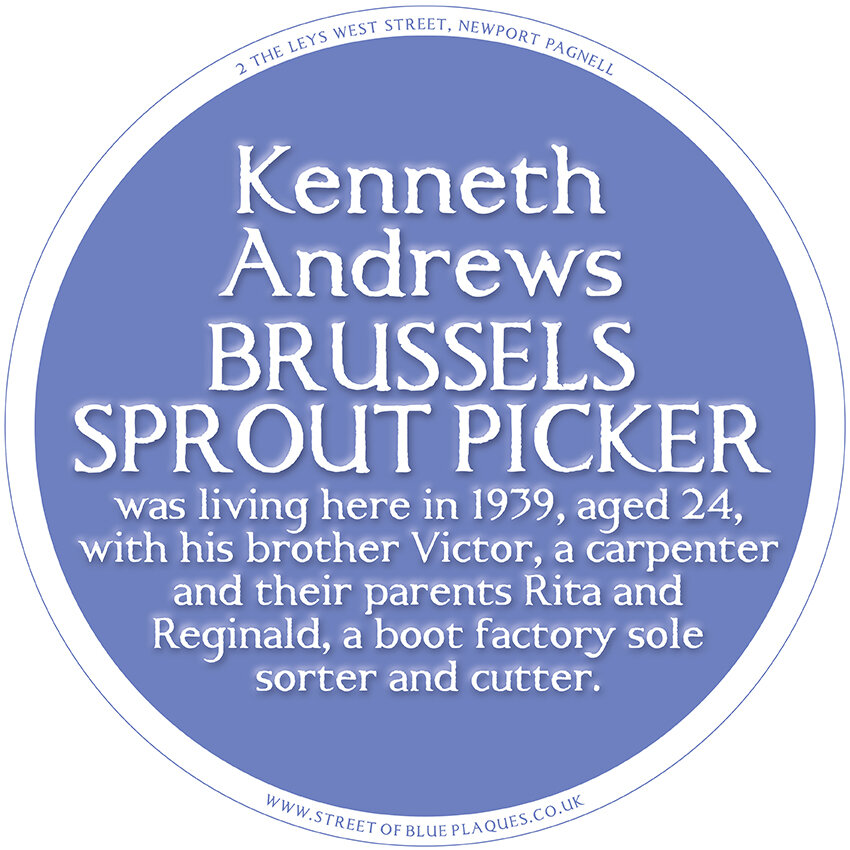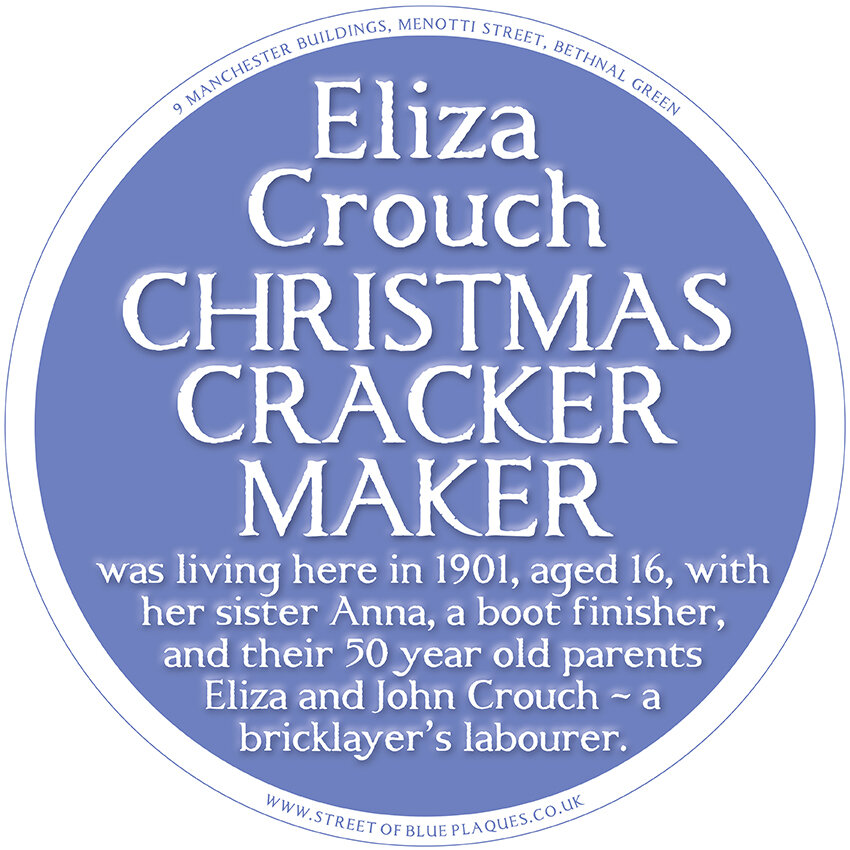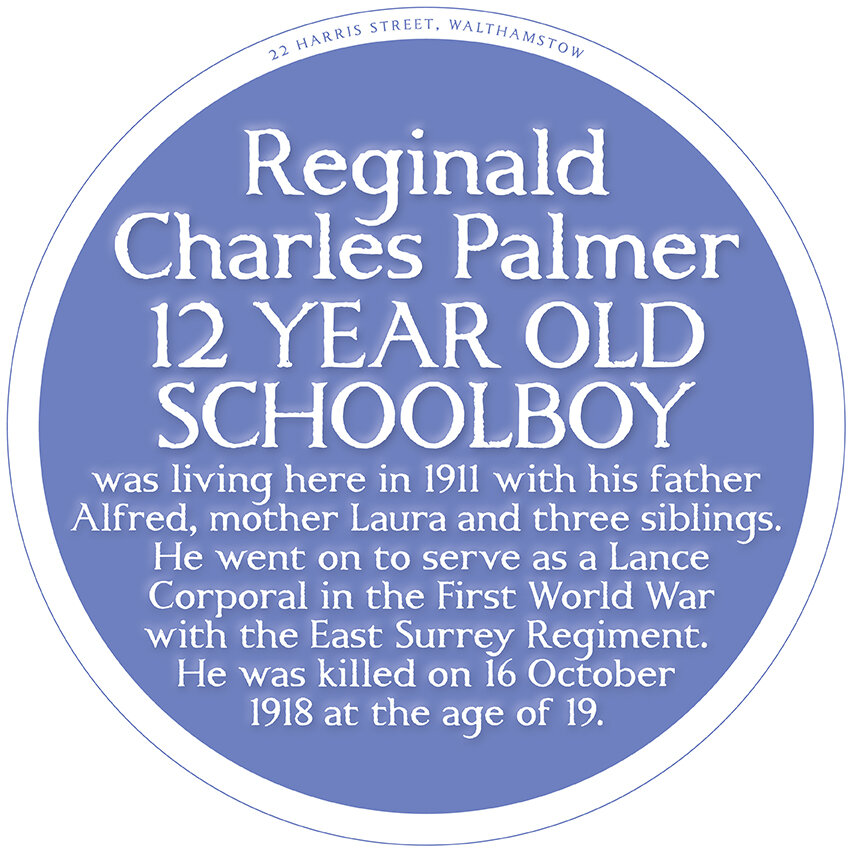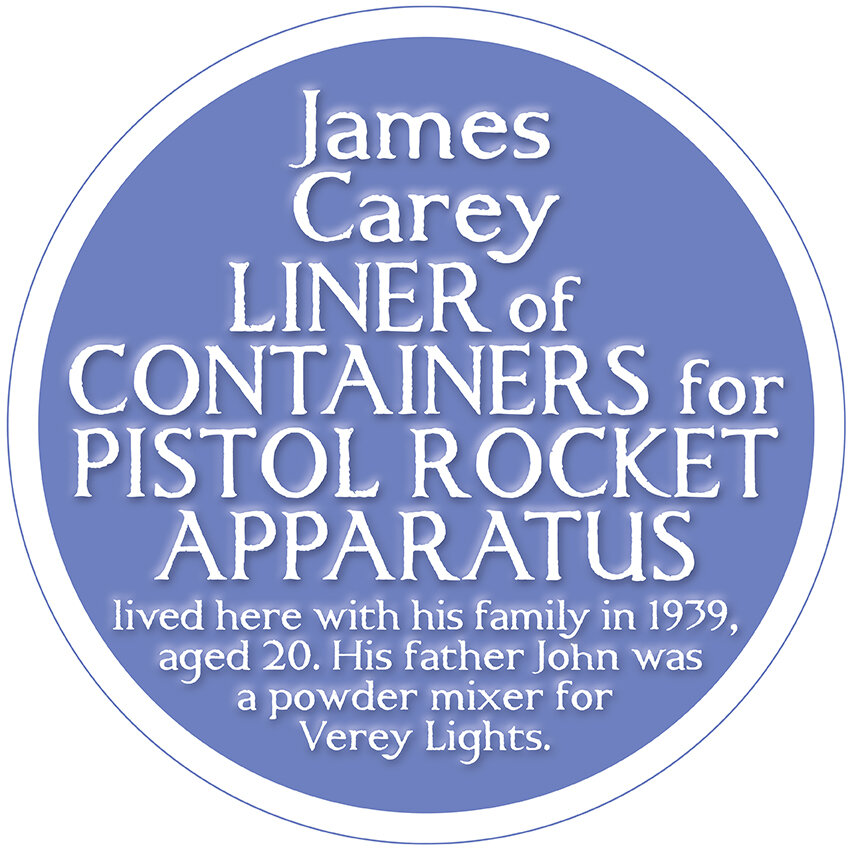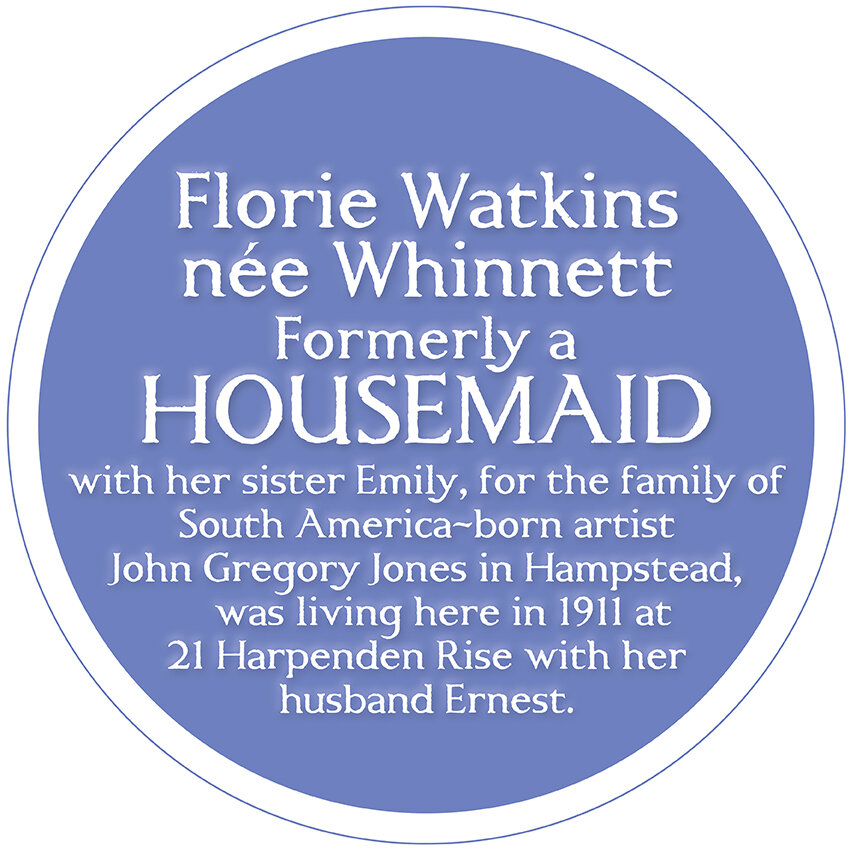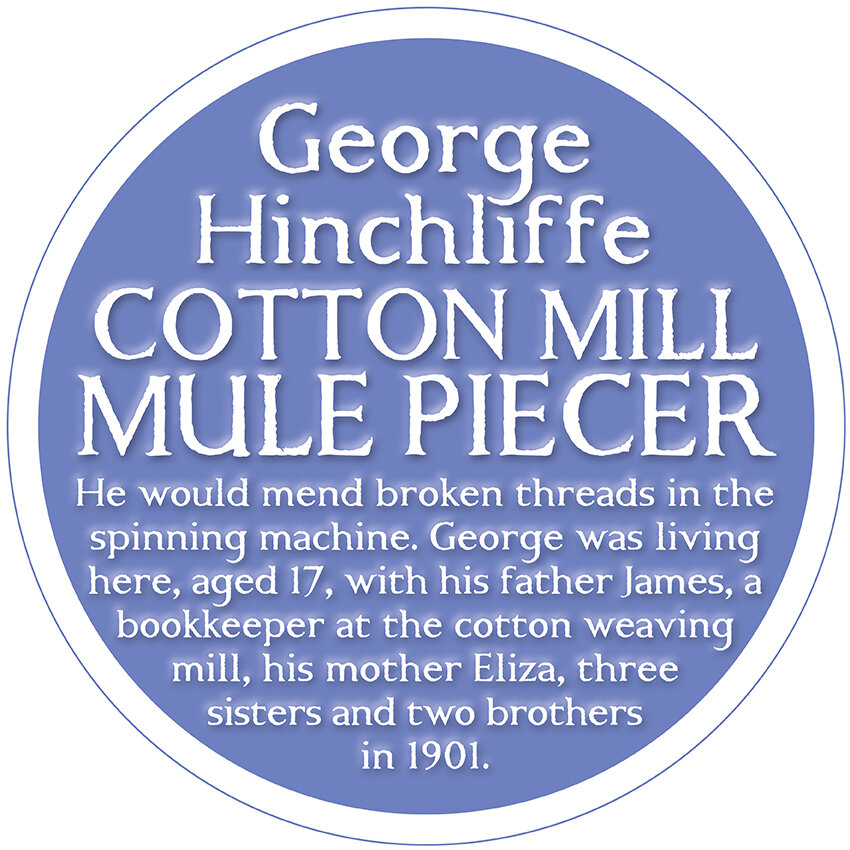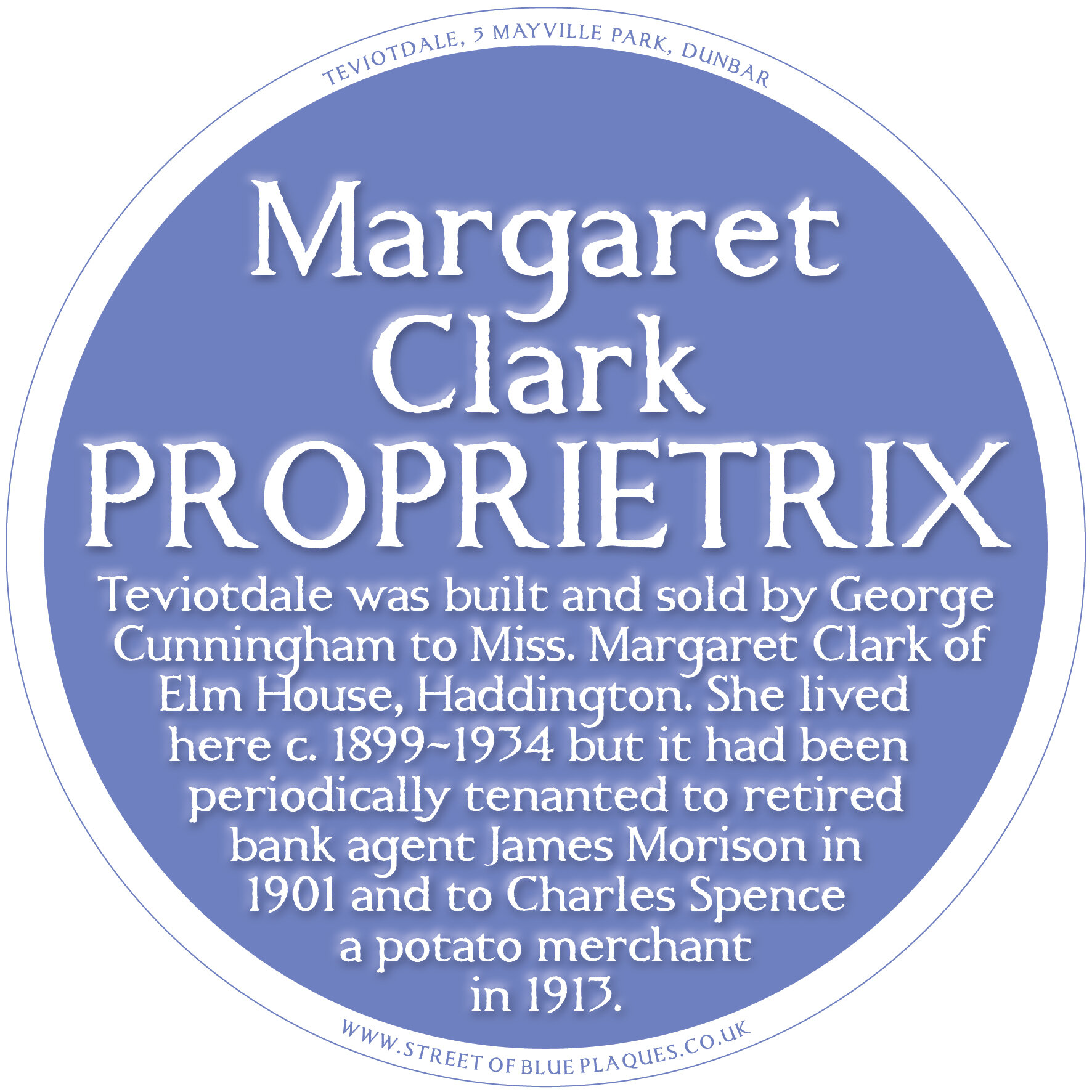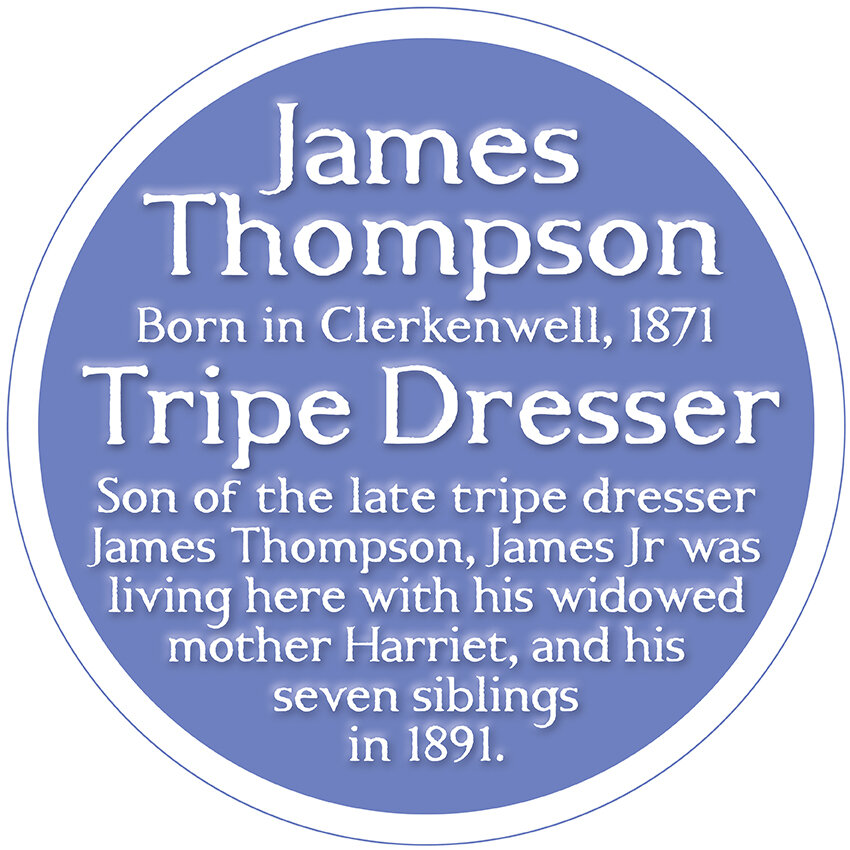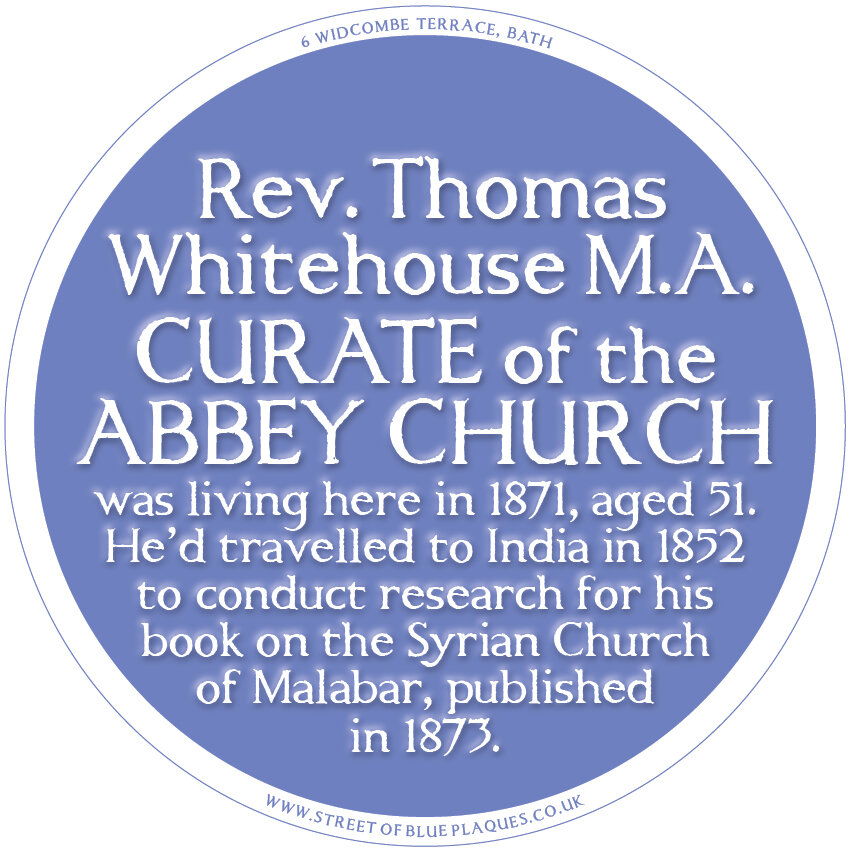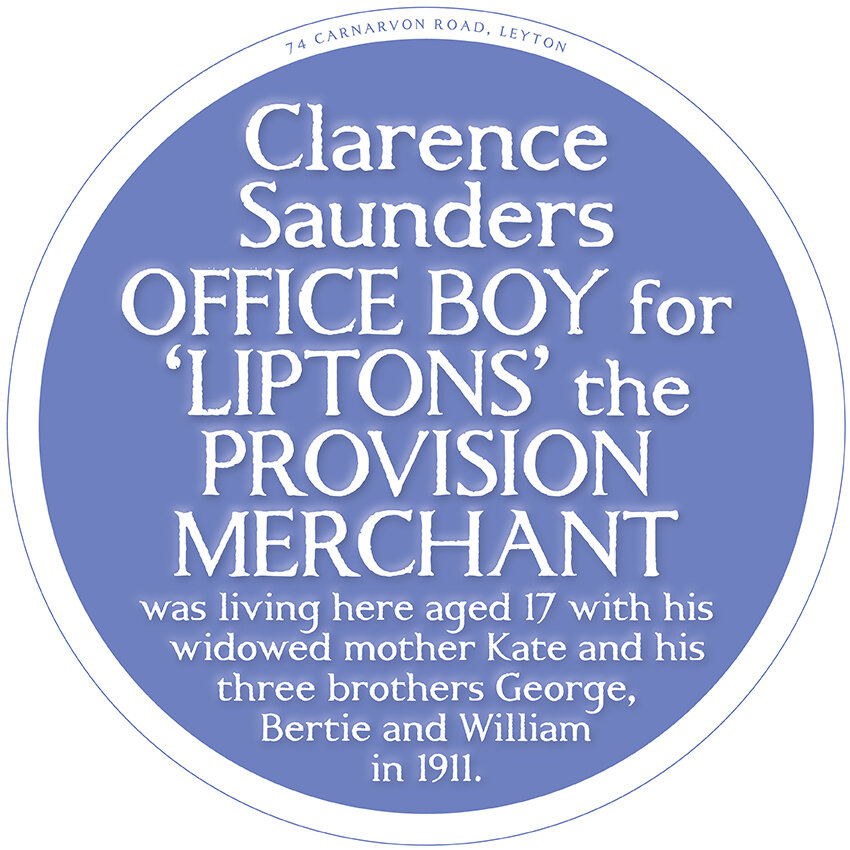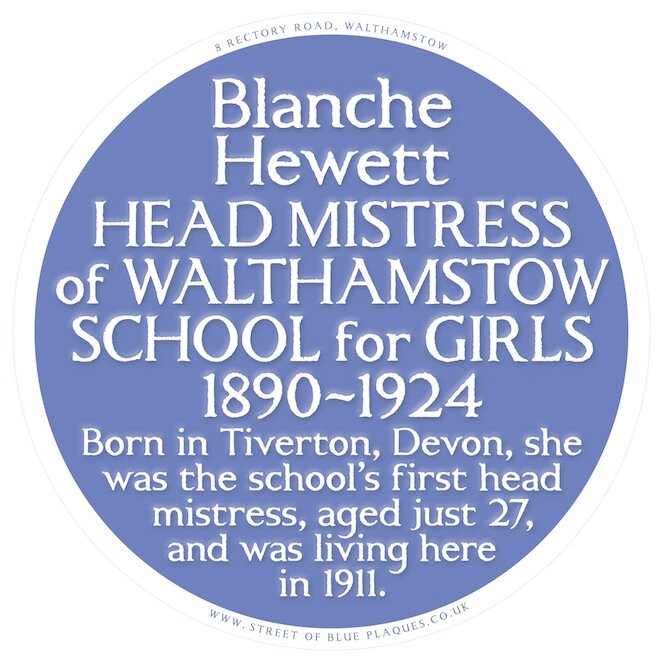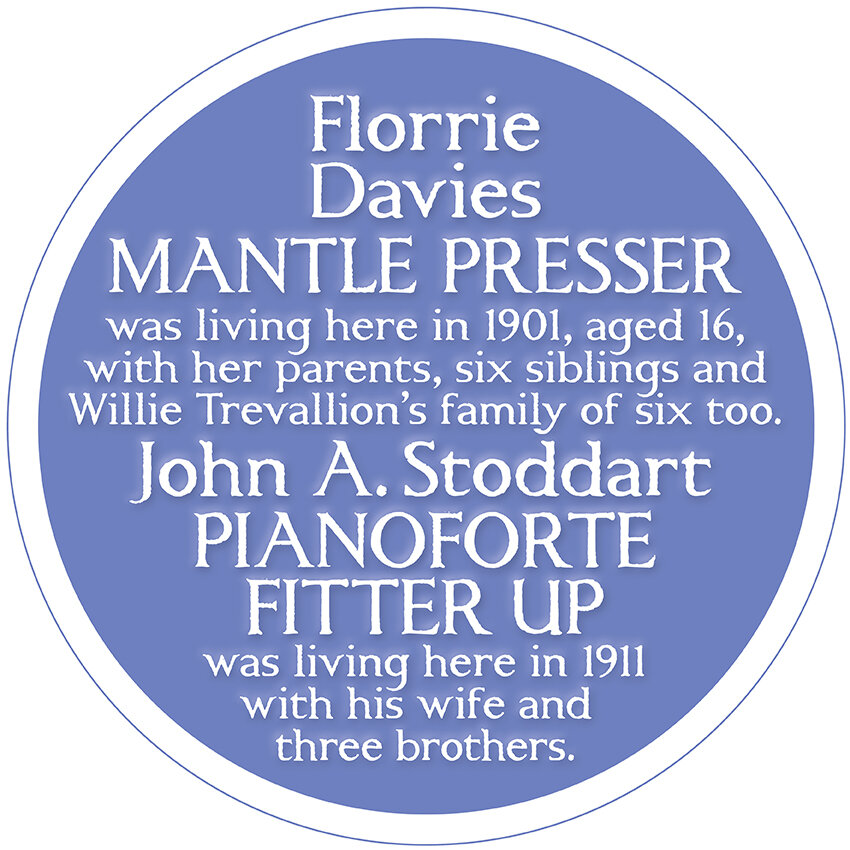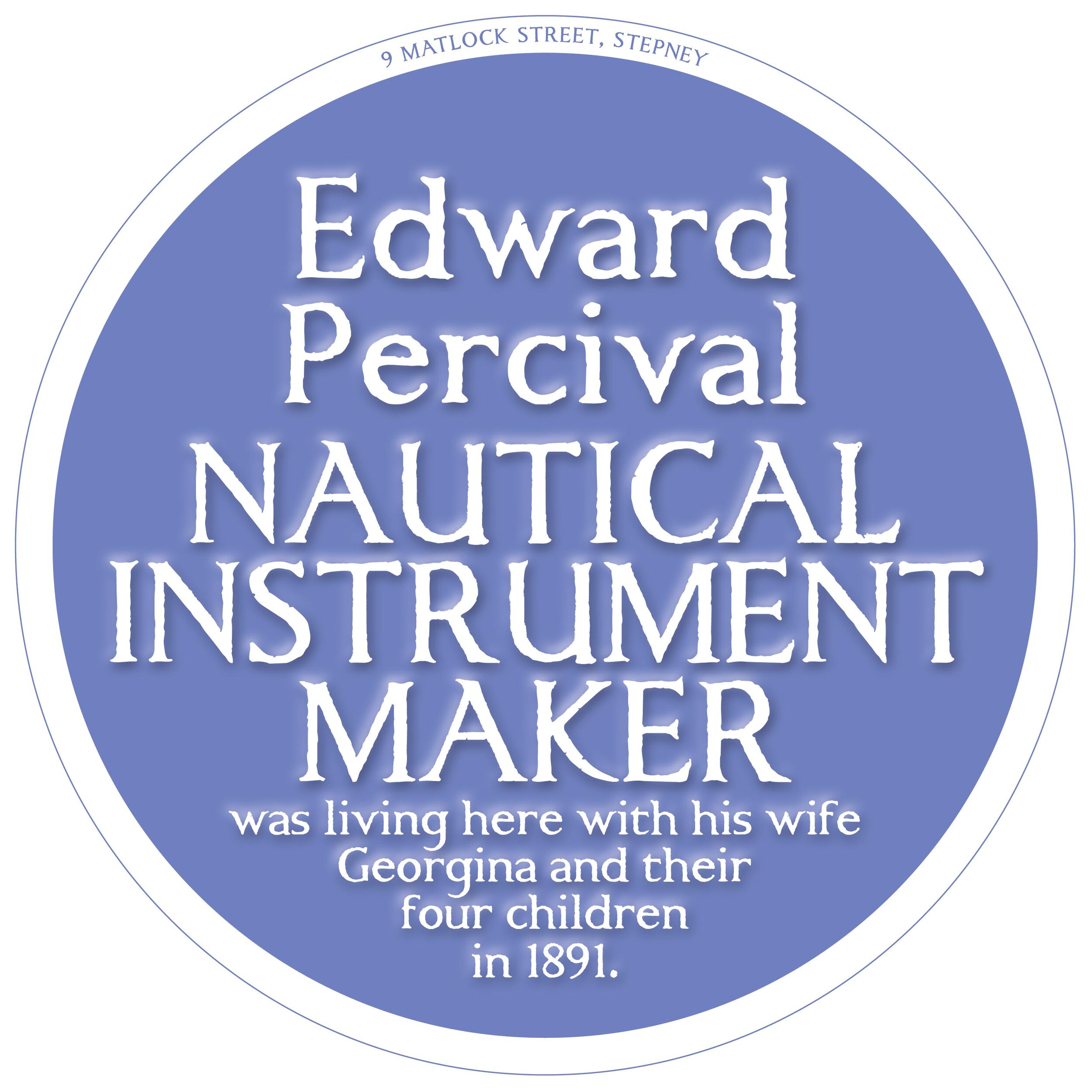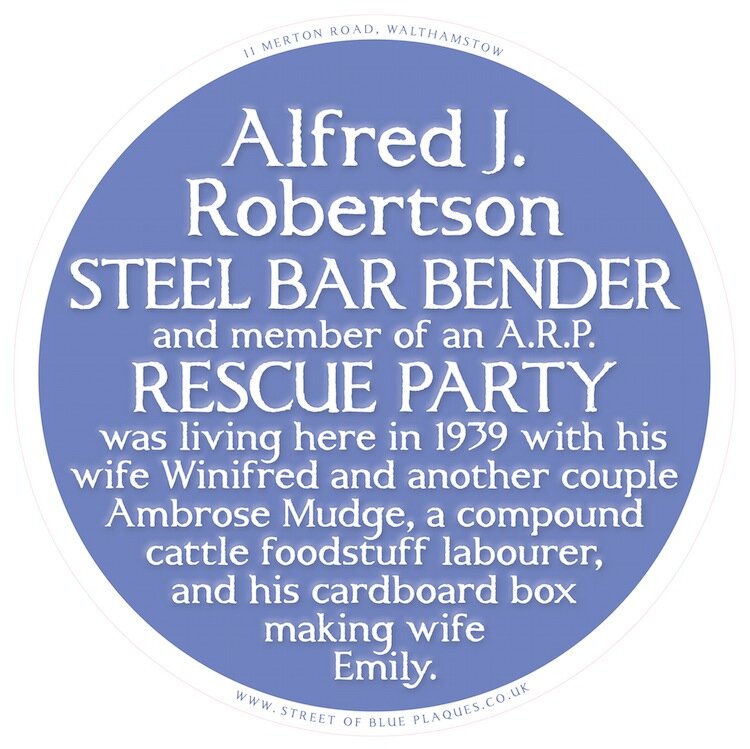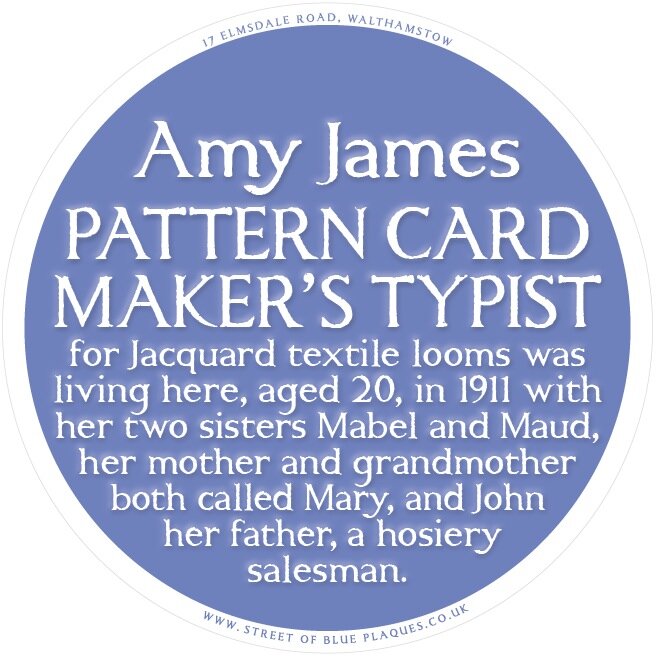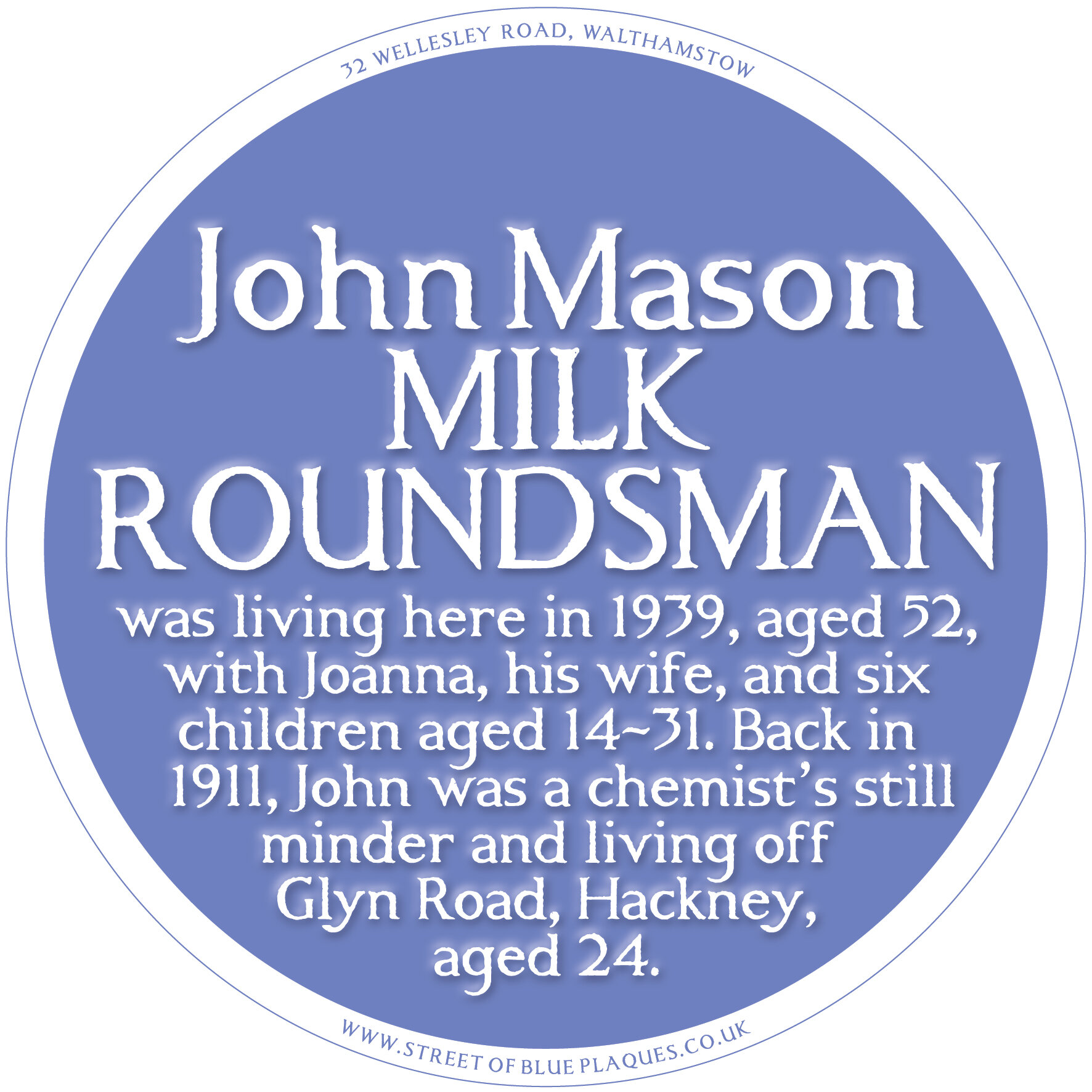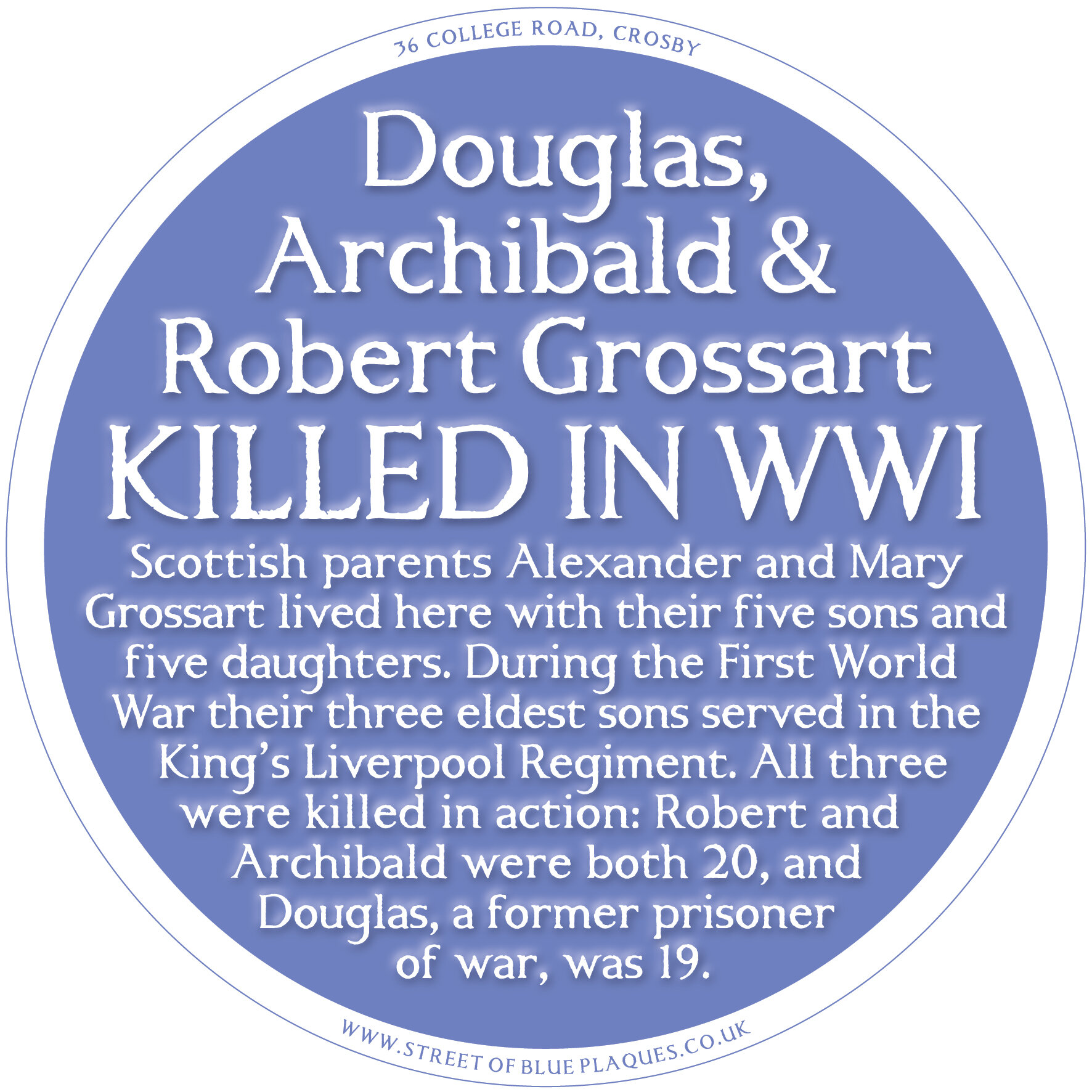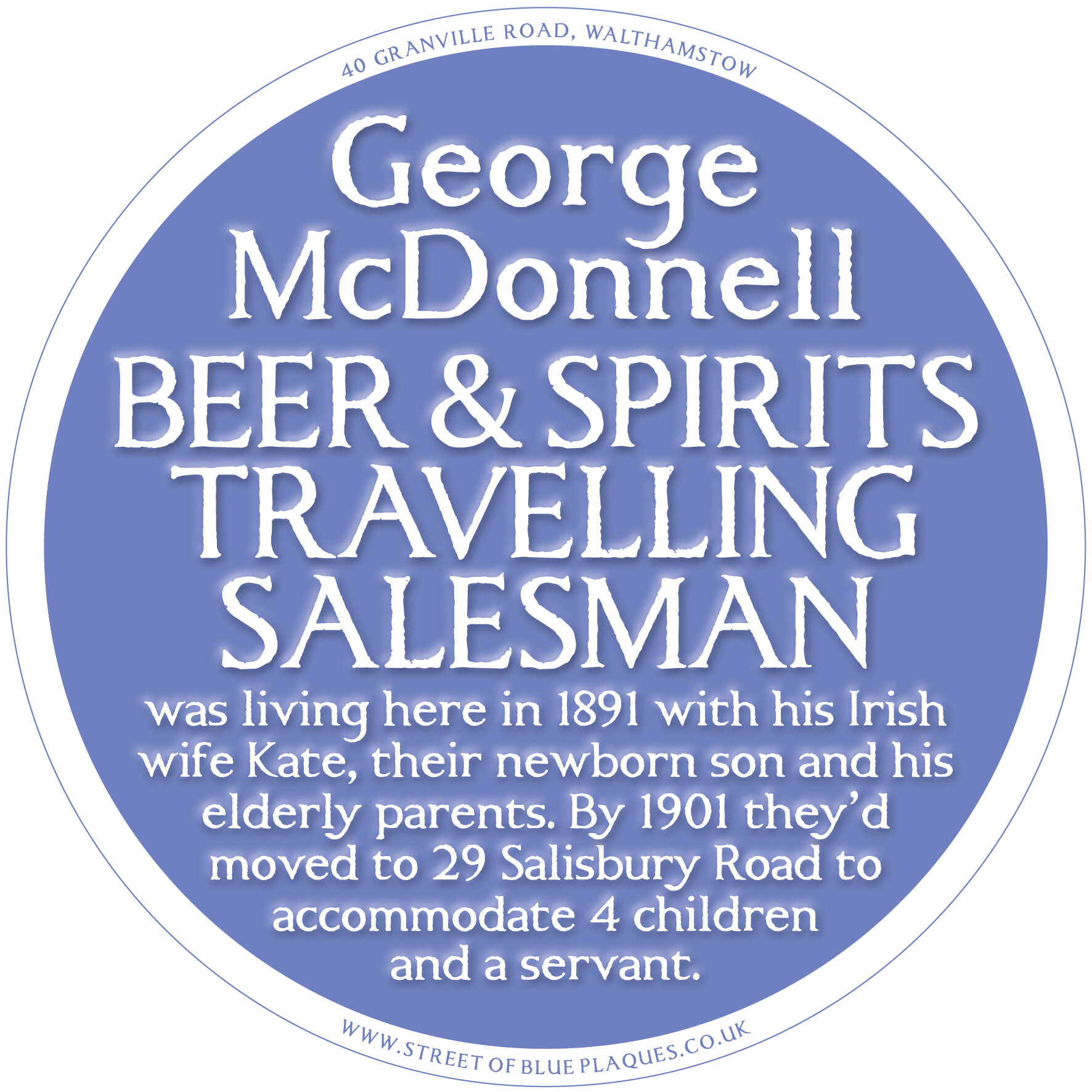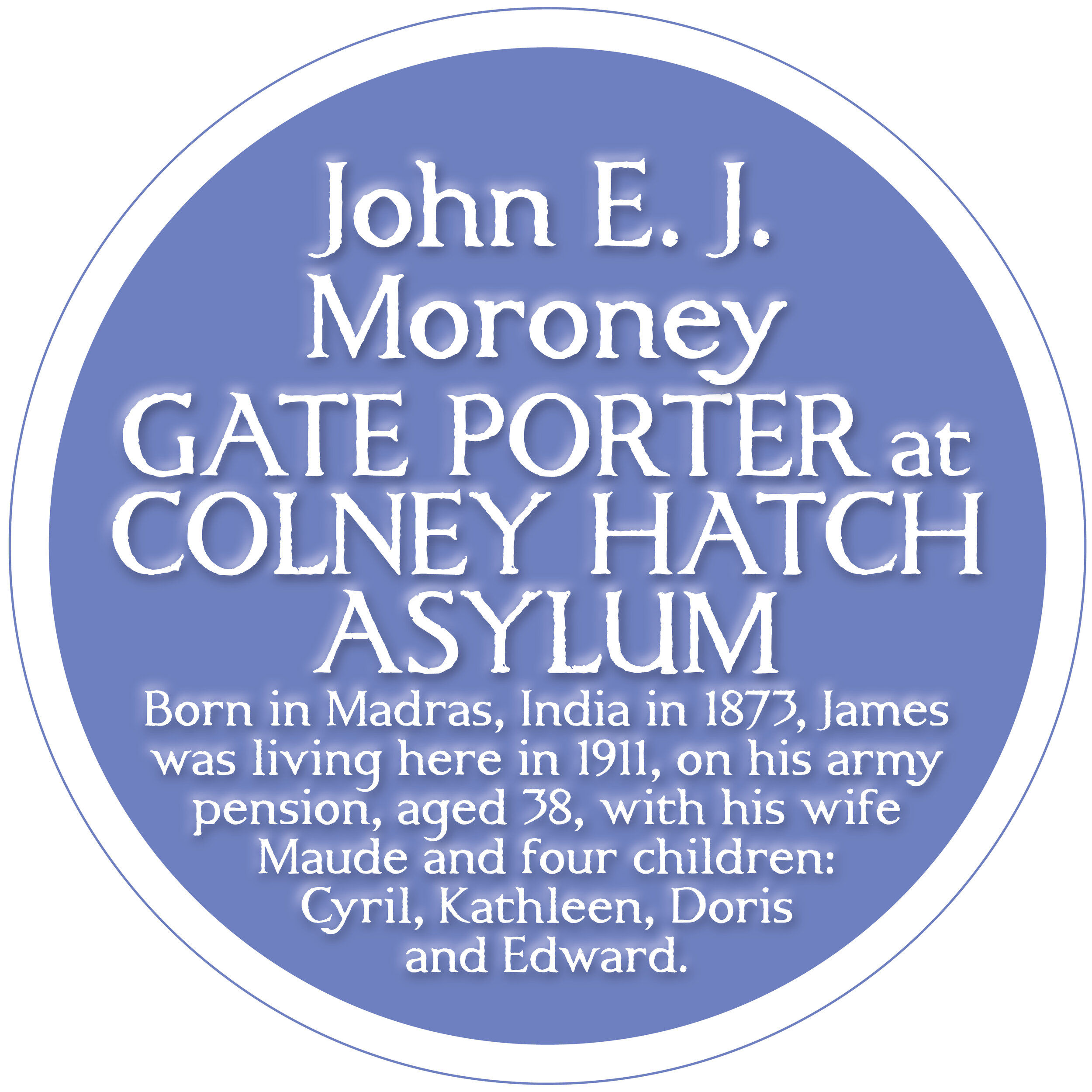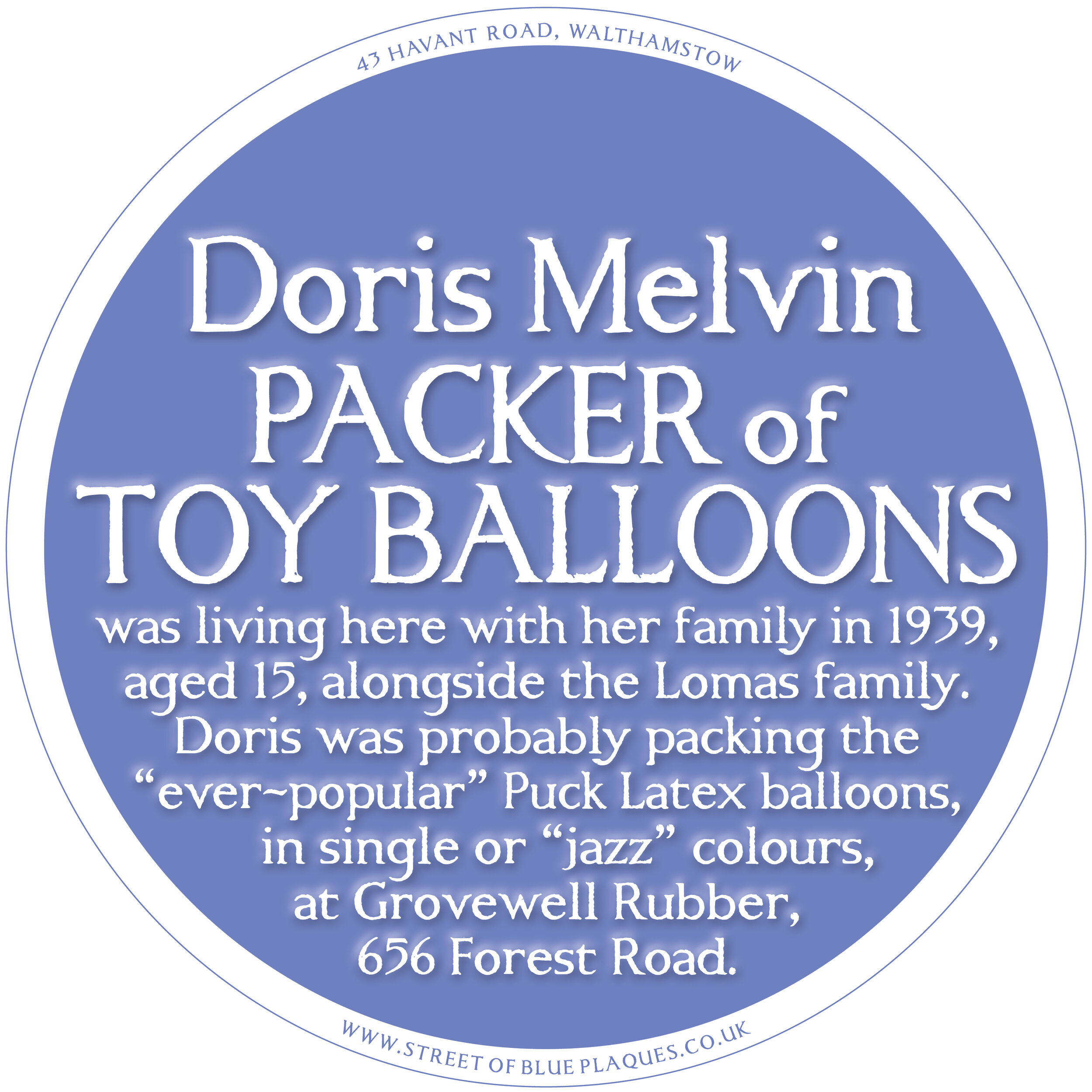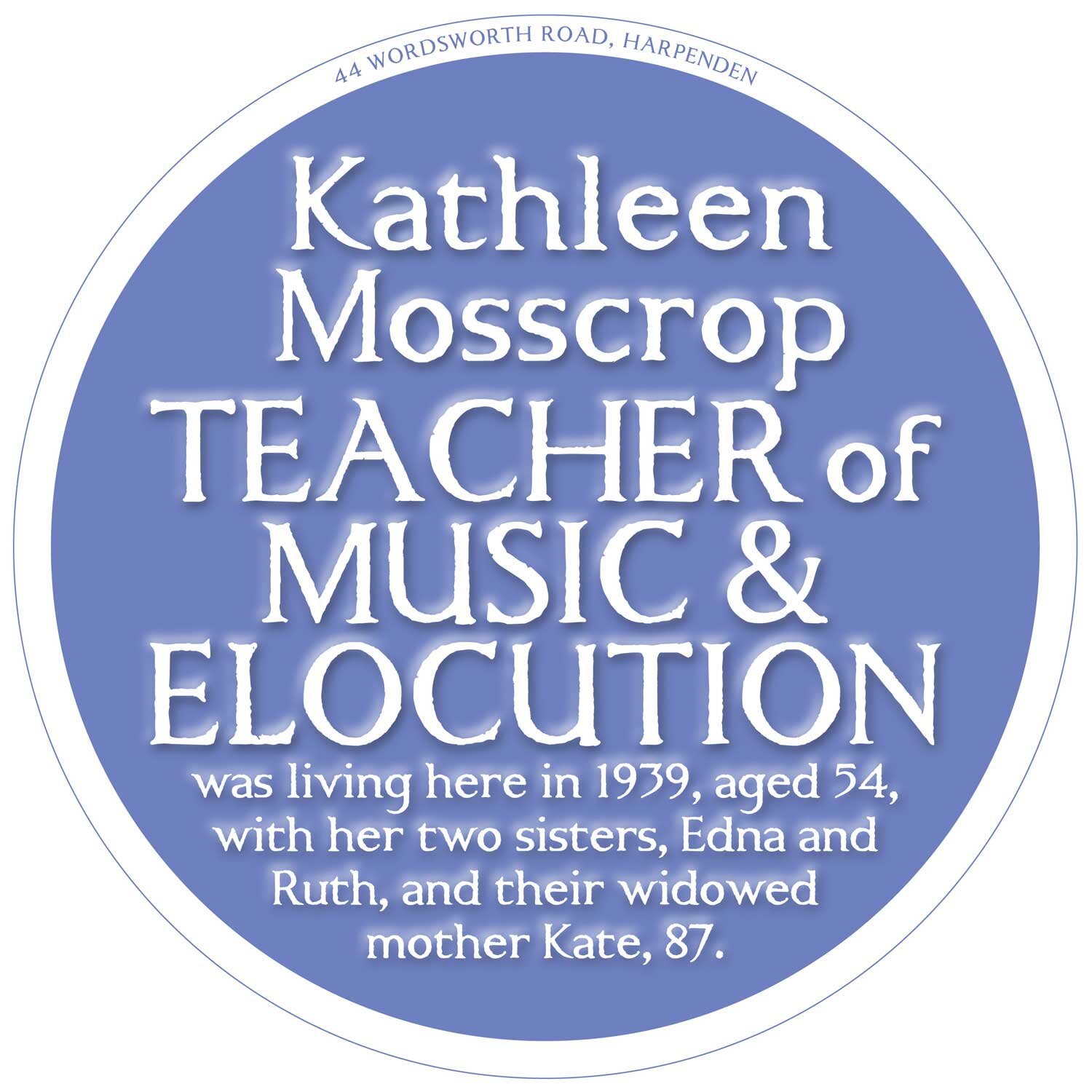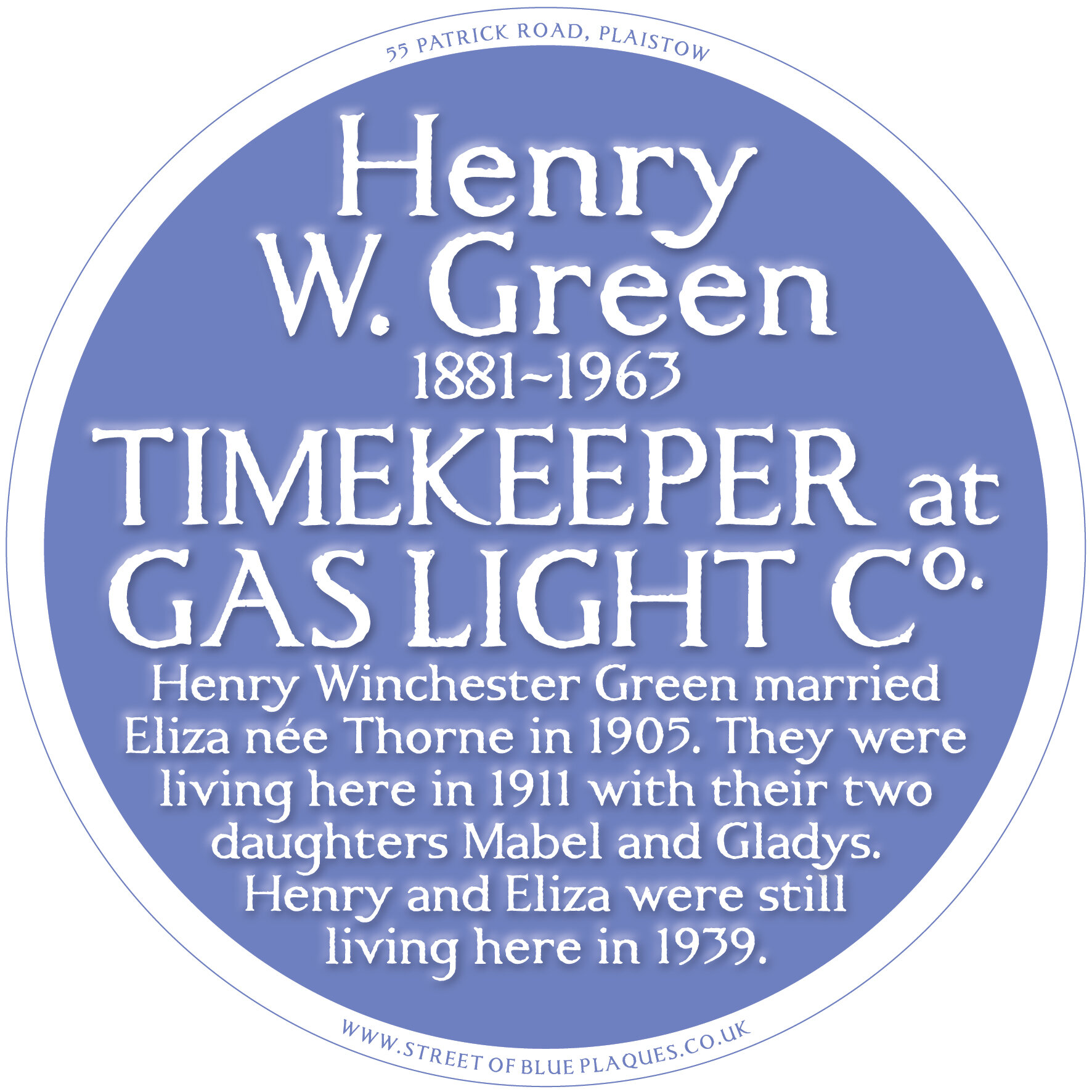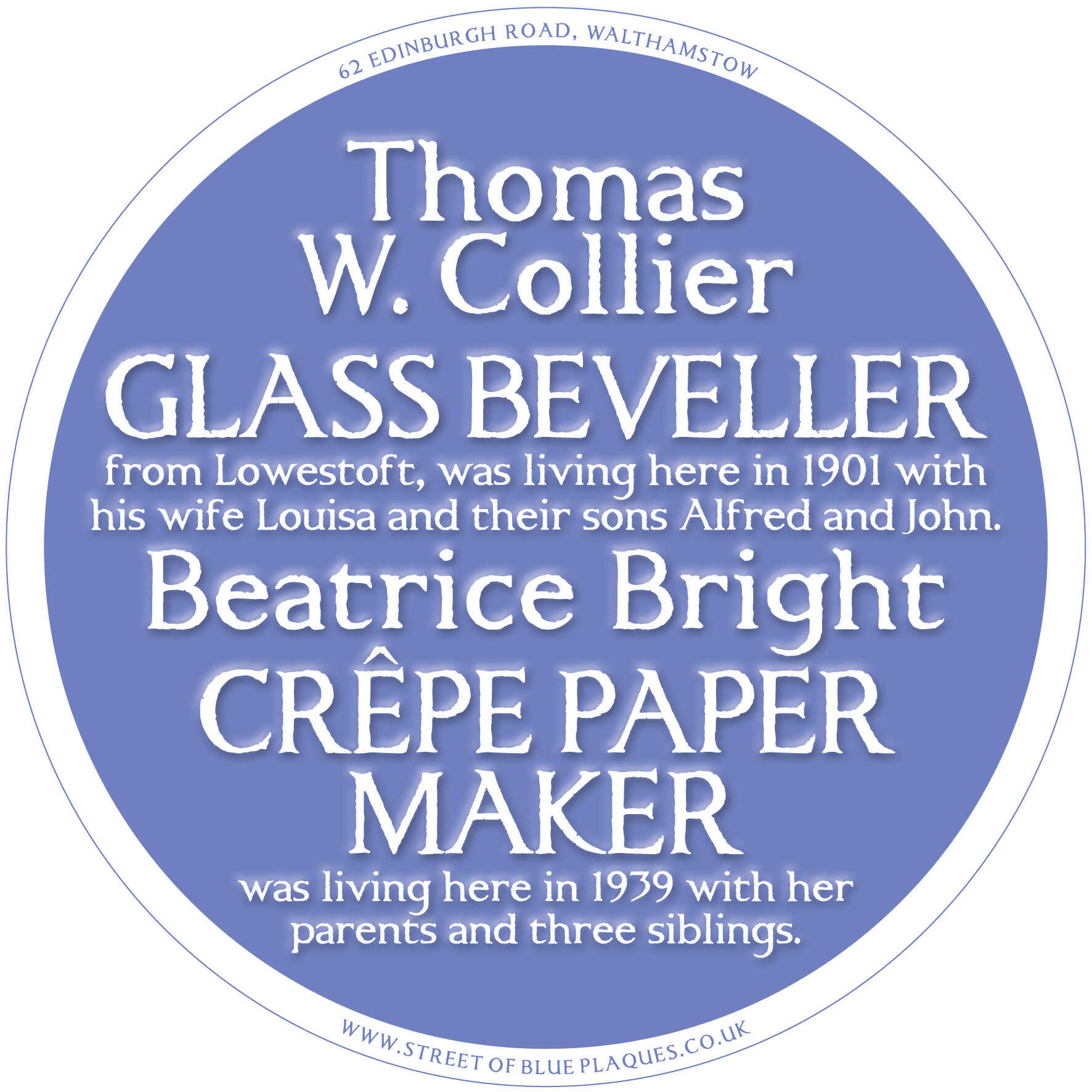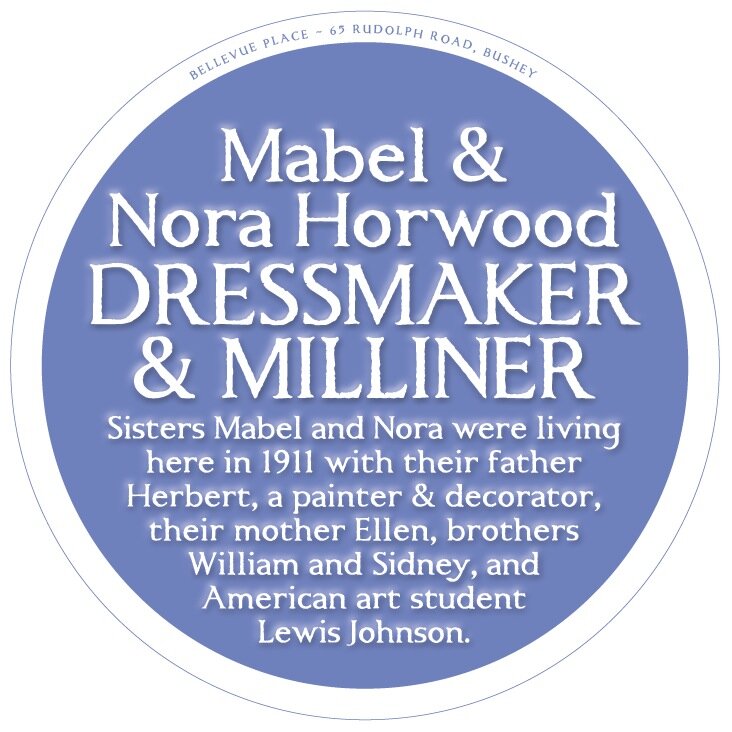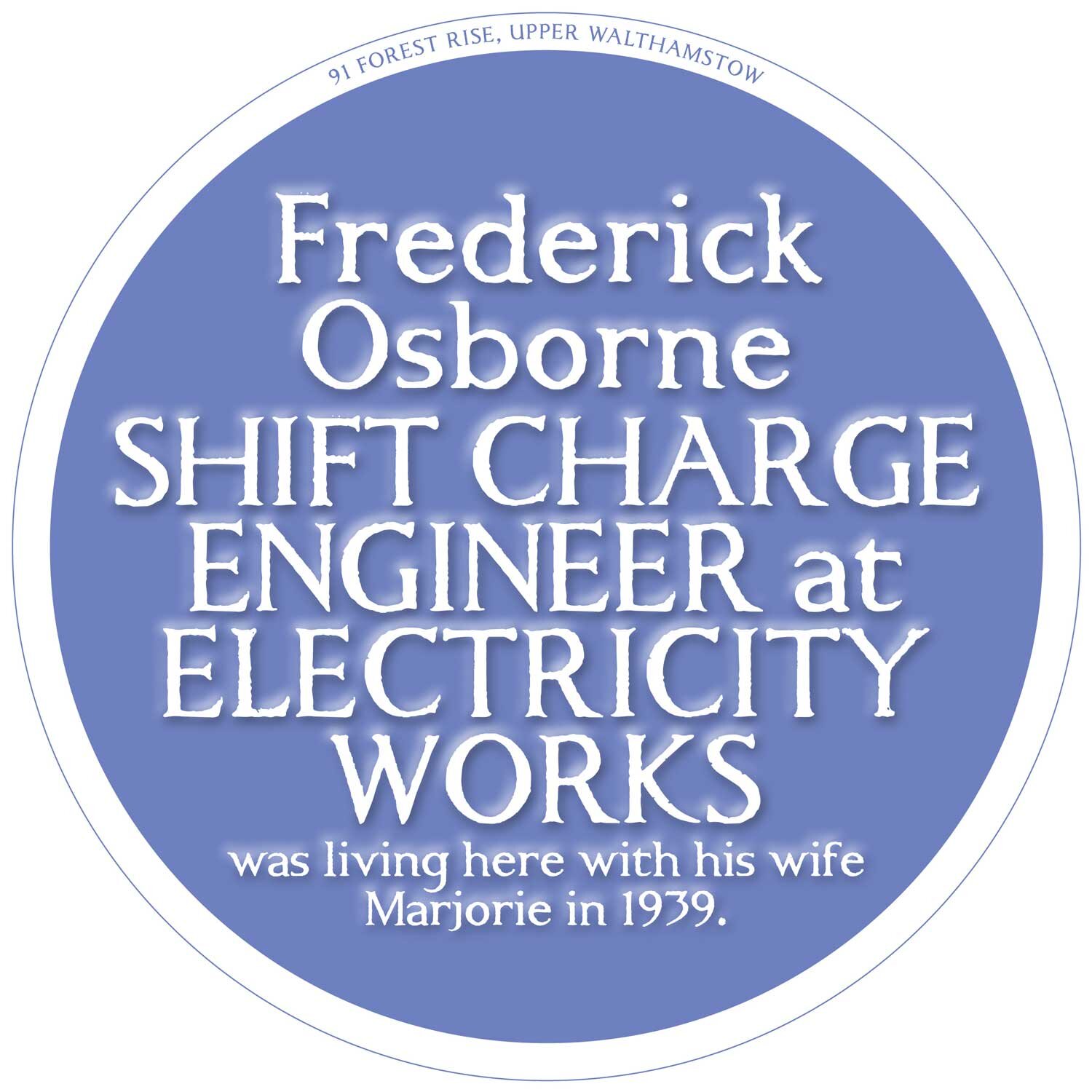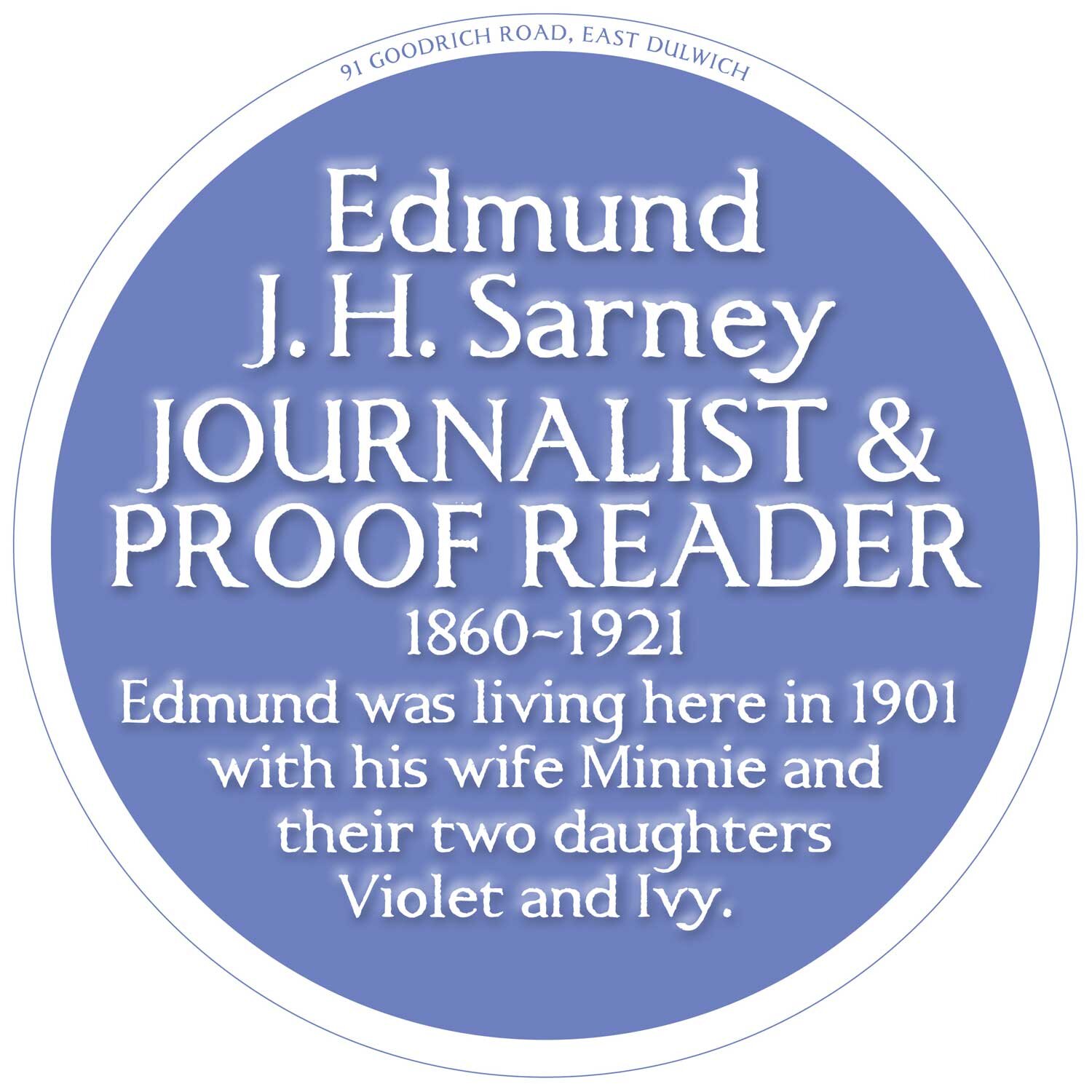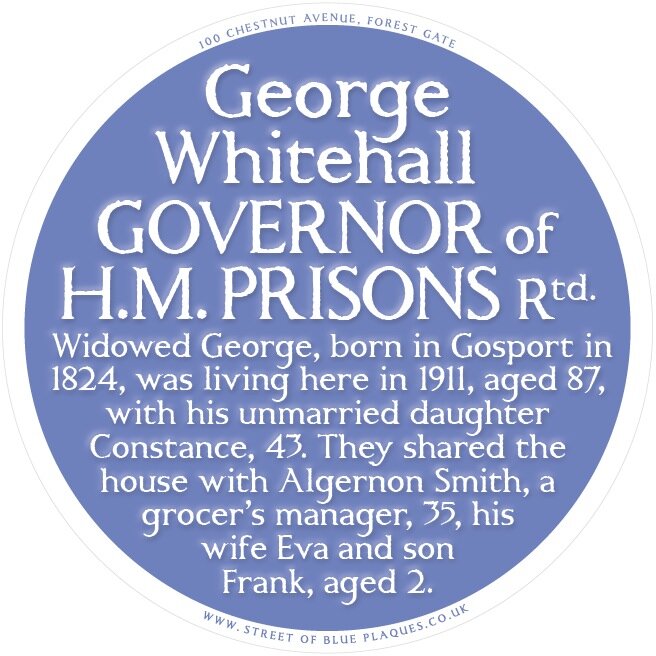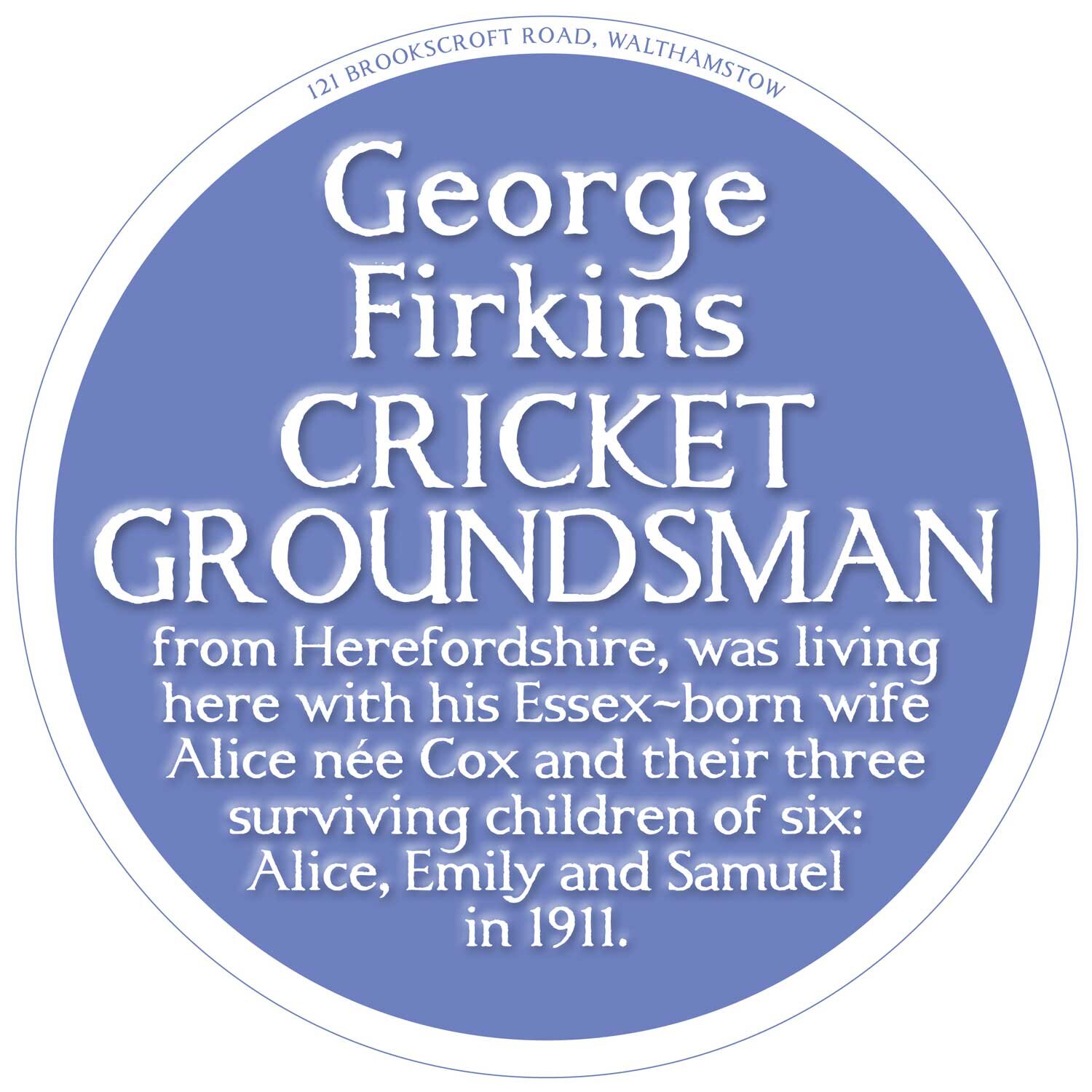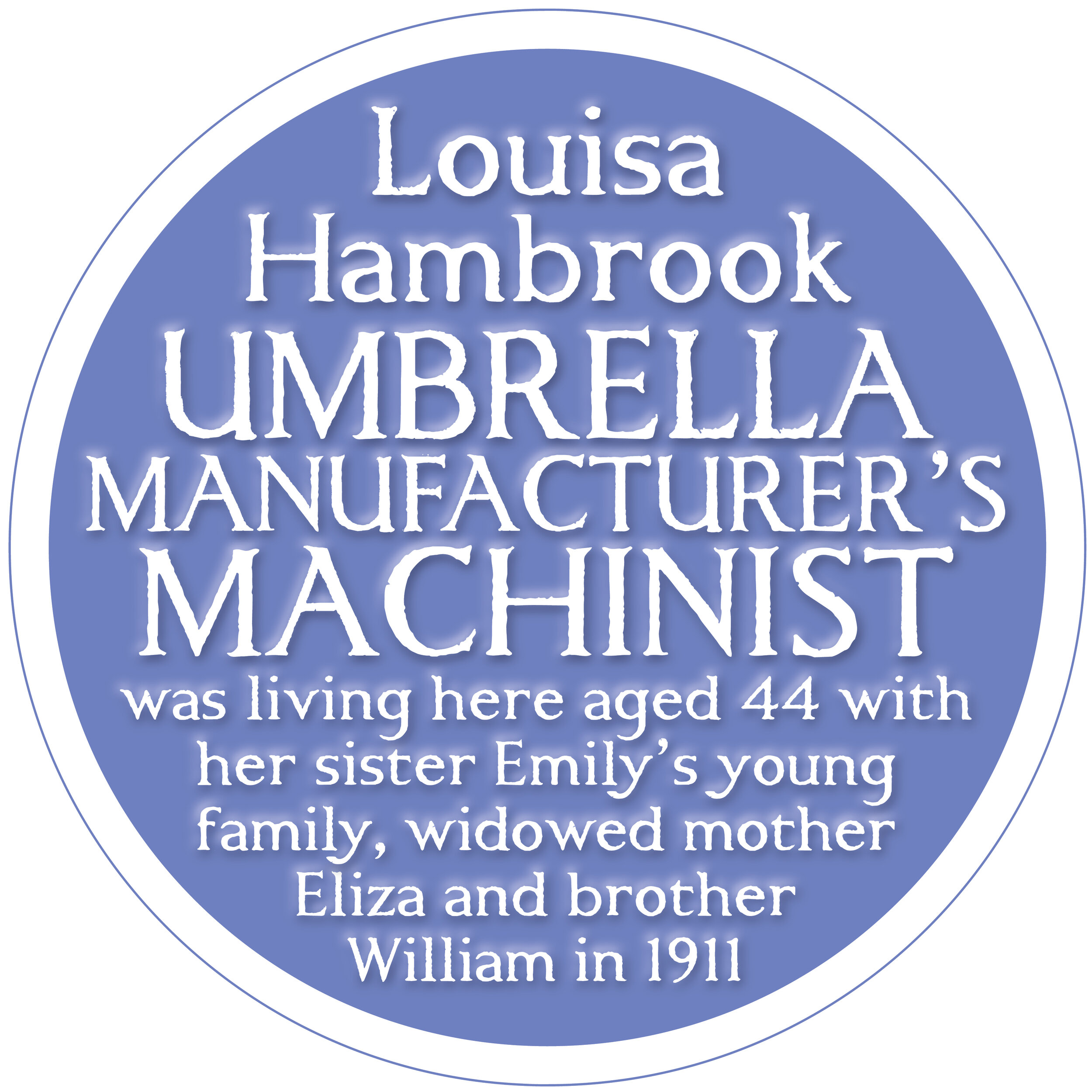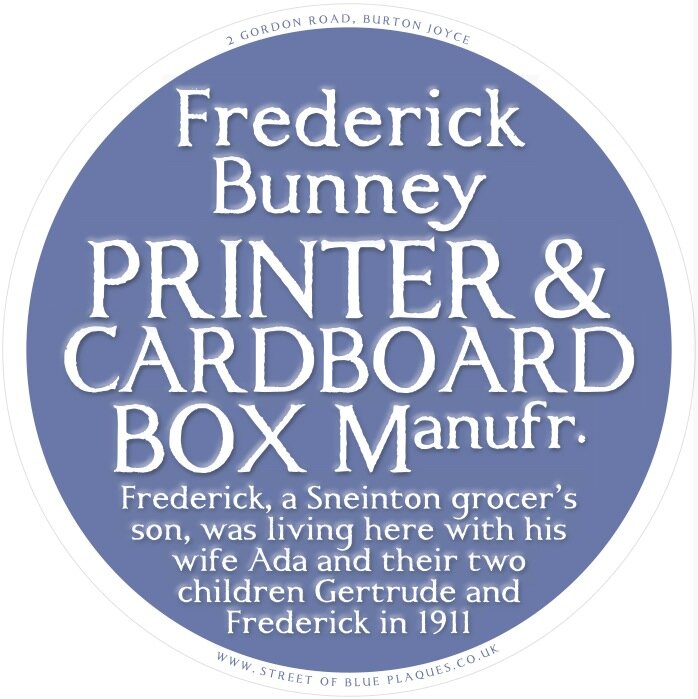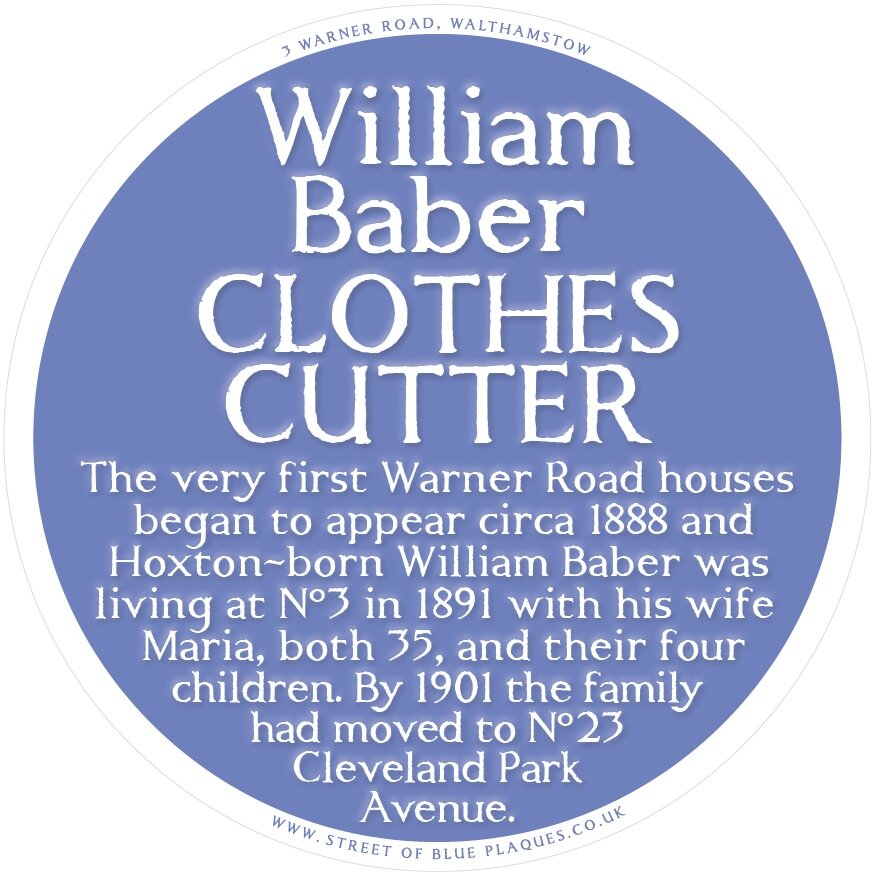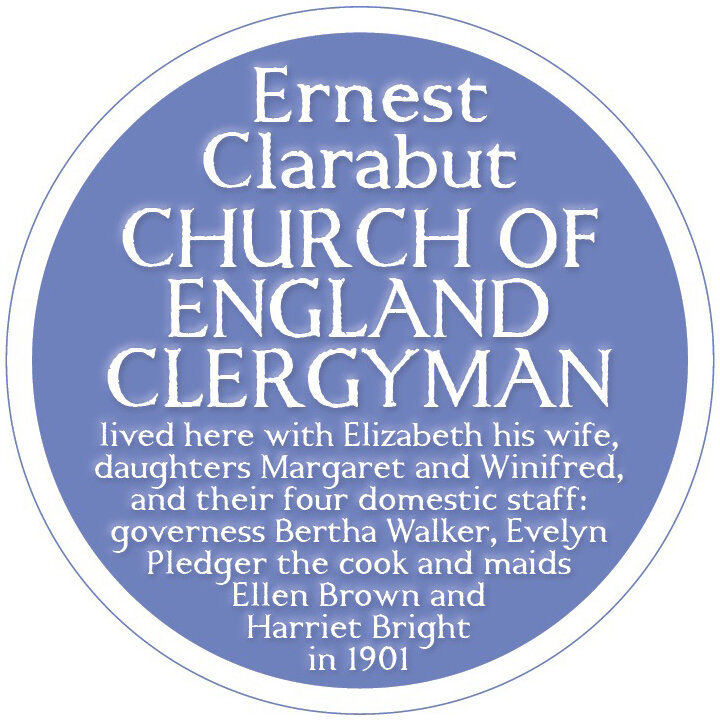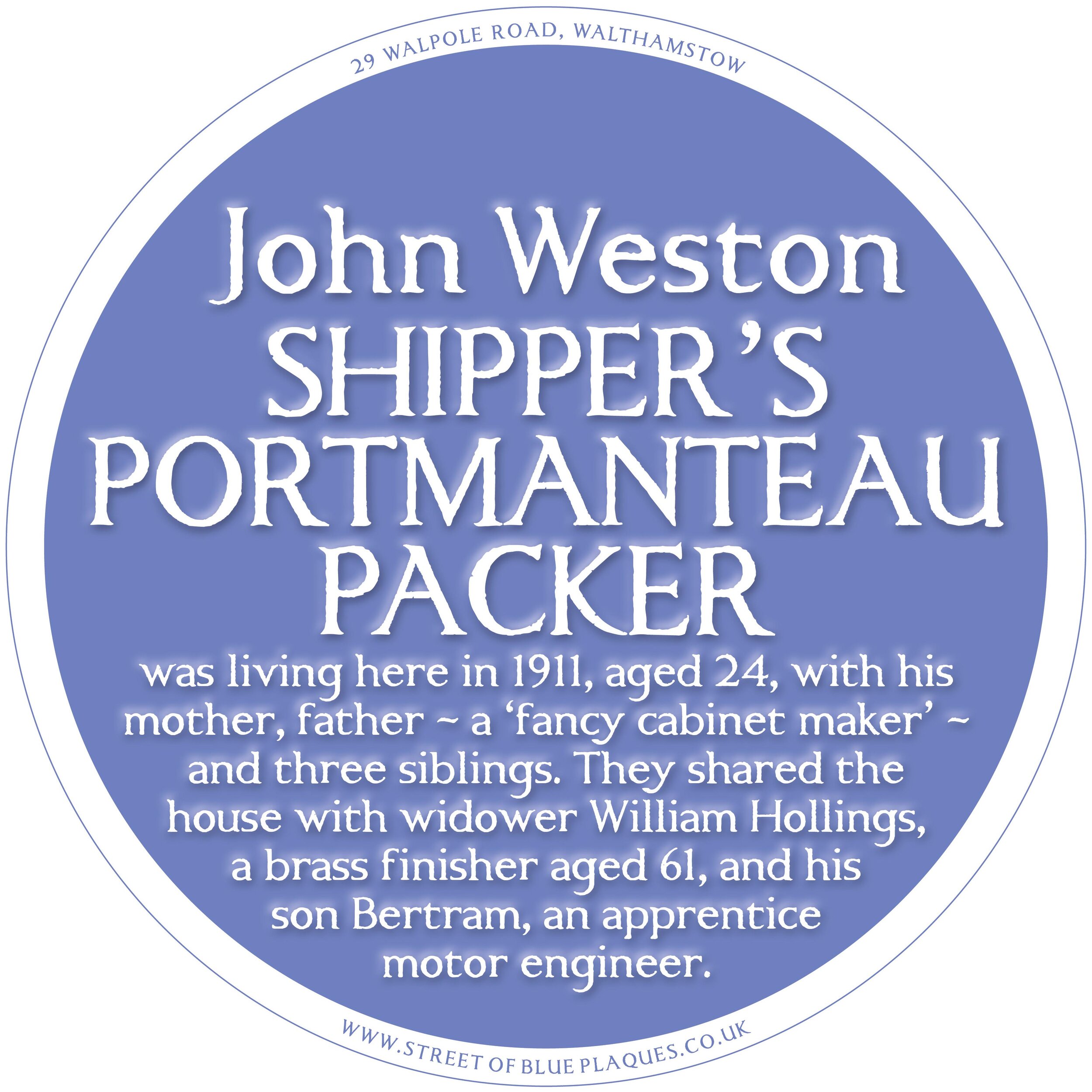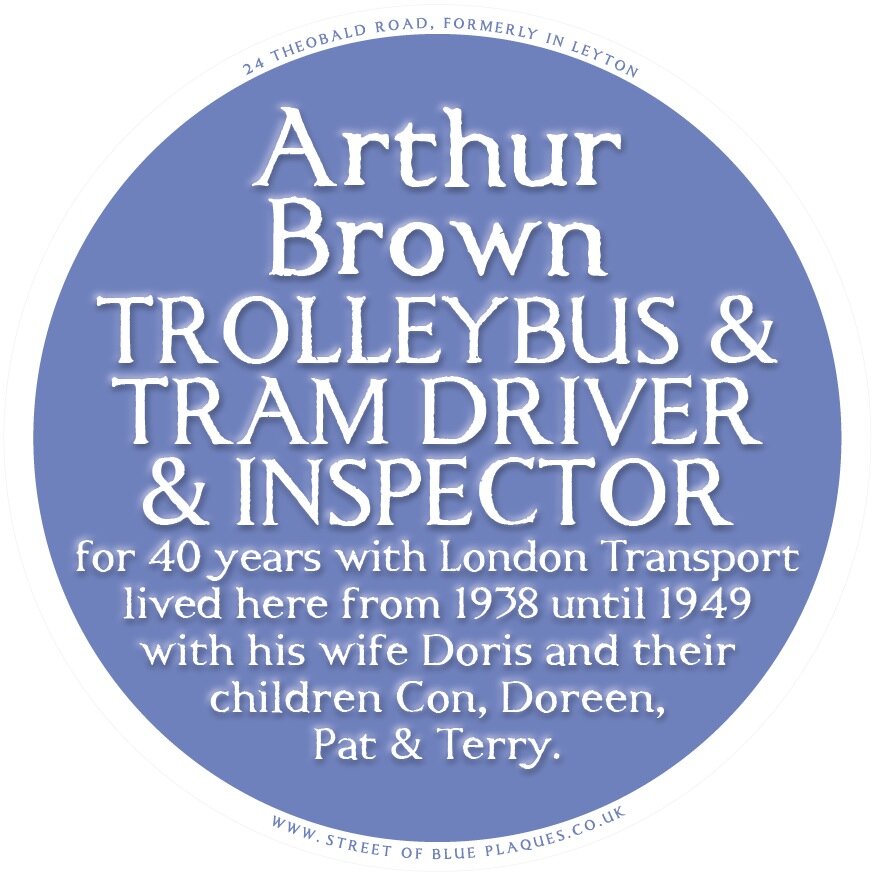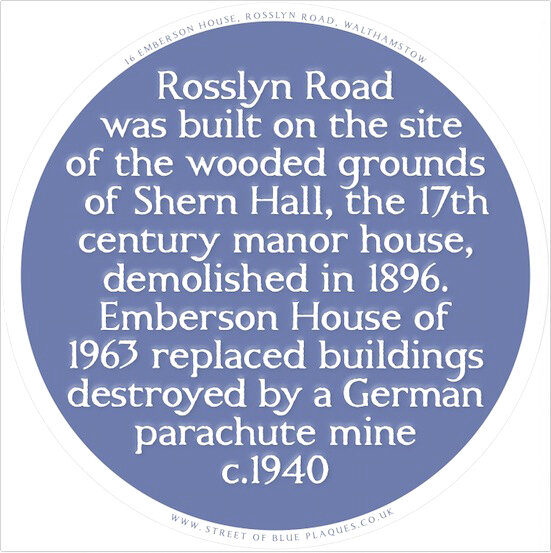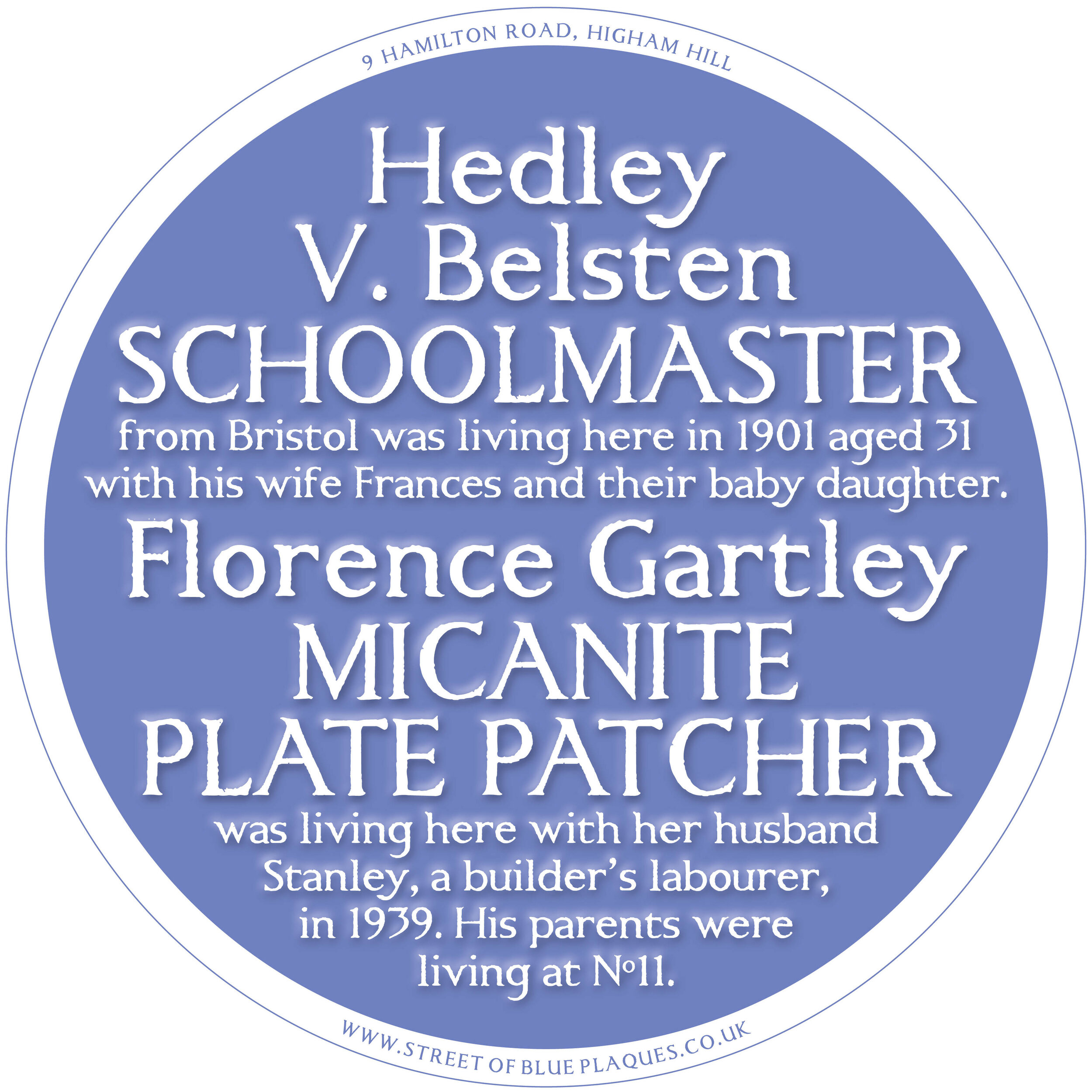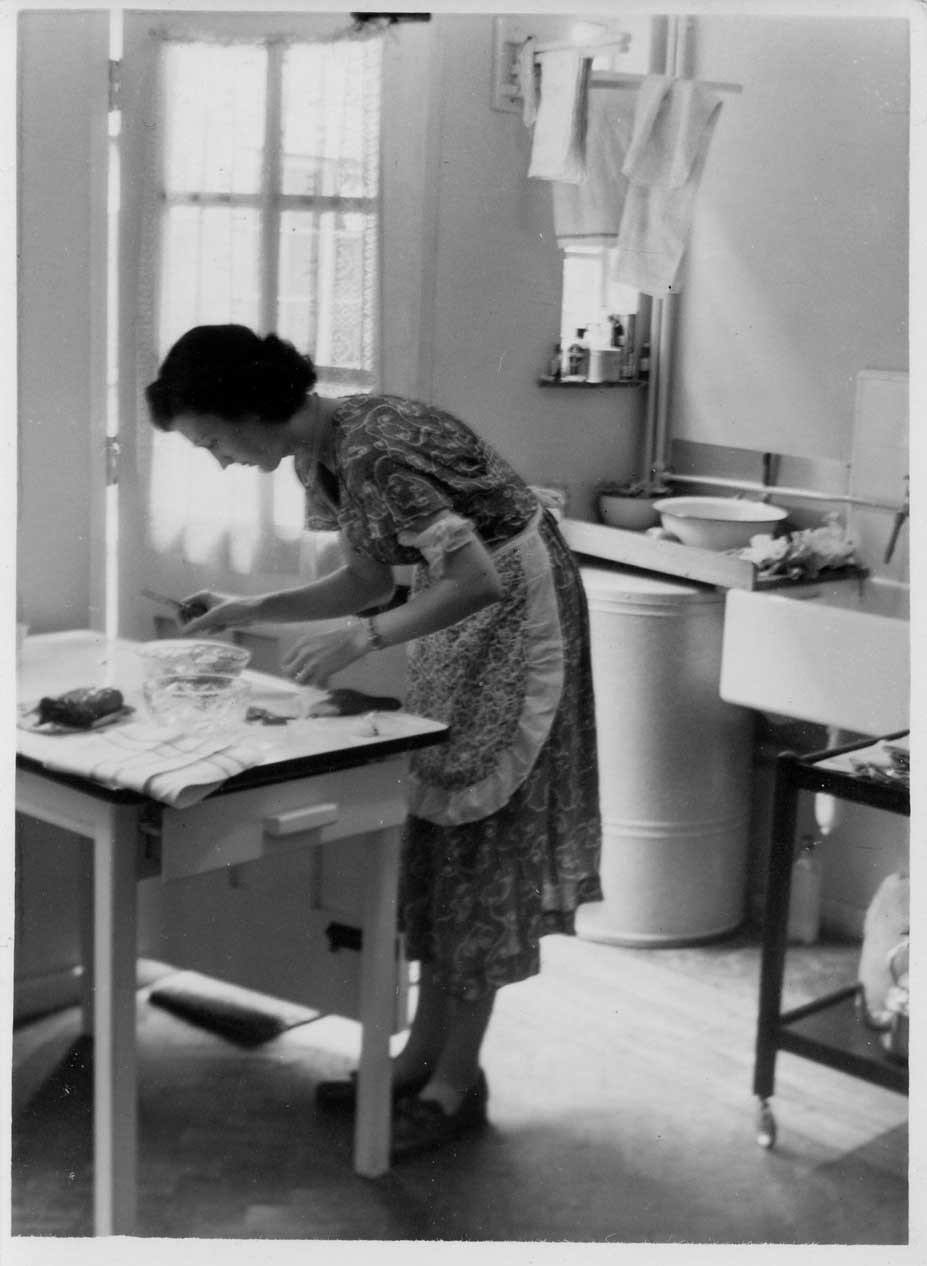Street of Blue Plaques
Est. 2011
Danny Coope curates and creates English Heritage-style plaques that celebrate real, former residents of houses and shops as if they were famous. Based on historic census information from 1841-1921 and the 1939 ID card register.
EXCITING NEWS: RAILWAY THEMED PLAQUES FOR 200 YEARS OF THE RAILWAYS
2025 is the 200th anniversary of Britain’s first public railway (in Stockton & Darlington). I’ve been commissioned by SCRP to create 200 plaques across 10 railway lines in the South East for RAILWAY200: the nationwide celebrations.
CLICK HERE FOR THE FULL STORY
Danny’s first mass installation of blue plaques on a London street in 2011
HOW IT CAME ABOUT - E17 ART TRAIL 2011
We might know a little about the last family to live in our house but who lived there over 100 years ago? Where were they from? What did they do?
Having researched some family history online I used the same census and ID card register data (1841-1939) to find out who lived in my house in Walthamstow, and my fascination extended to the whole of my street. I really wanted to share what I was finding out and hit upon the blue plaque idea for the up-coming local Art Trail in 2011, part installation/part history lesson. I had them printed on paper, and cut them out by hand, and went up and down the street meeting neighbours I’d never met before, and convinced many to stick these plaques in their front windows for the three weeks of the town-wide arts event. I got over 60 on display, quickly becoming a highlight of the trail. Many of the houses were so proud of their history they kept the plaques up for months, even years.
WHY BLUE PLAQUES?
Alternative blue plaques are nothing new of course (Gavin Turk etc) but why copy the real blue plaques? The significance of the ‘real’ blue plaques is so ingrained in British psyche that it was important to me to mimic their appearance as I wanted viewers, even for a split second or unconsciously, to imbue these ordinary people with the same sense of wonder and achievement.
Admittedly it’s often their extraordinary occupations that are the most engaging aspect - from the extraordinarily tedious or grim (‘tallow melter’ and ‘sausage skin packer’), or incredibly specific (‘plastic fork cleaner’ and ‘Bovril porter’) to the wonderfully curious (‘lightning cartoonist’ and ‘saggar maker’s bottom knocker’) to the awfully sad (a 12 year old boy who would later be killed aged 19 just 3 weeks before the WWI armistace) to occupations we’re ever so glad to have lost (‘ivory turner’ and ‘fur cutter’).
In the 1939 identity card register women were often occupied with ‘unpaid domestic duties’
FORE STREET SHOPS, EDMONTON 2012
Having covered a street of houses, I was commissioned in 2012 by Enfield Council to create a trail of window plaques for a long street of shops in Edmonton, whose emphasis naturally focussed on making and selling goods and services.
“It was important to mimic the appearance of ‘real’ blue plaques as I wanted viewers, even for a split second or unconsciously, to imbue these ordinary people with the same sense of wonder and achievement...”
POSITIVE DISCRIMINATION THROUGH CURATION
Although I’ve put together a couple of Waltham Forest themed compilations for special events, one on art and design and another on food and drink, the plaques I’m researching and producing nowadays are mostly commissioned by interested individuals. The randomness of this process could be problematic in that, if viewed as a whole, the plaques might not represent a community or its particular history - so I try hard to curate who I choose for each plaque. For example, women tended to give up paid work when they got married and so offer fewer opportunities for interesting occupations compared to the men - but there’s still plenty of roles for women and girls that I’m able to celebrate. Not only ‘housewife and mother’ and innumerable roles in manufacturing (‘bullet maker’, ‘pencil lead layer’, ‘silk gasser’ and ‘ostrich feather curler’) but creative roles too (‘photographer’, ‘heraldic artist’, ‘fashion catalogue illustrator’ and ‘christmas card designer’) and strong roles ‘wholesale paper dealer’, ‘philanthropic & voluntary occupations’ and roles in WWII, thanks to the 1939 ID card register, eg ‘air raid warden’.
THE CENSUS AND YOU
Submitting our personal information to the census has probably always been seen as intrusive and a waste of money, but this scheme wouldn’t exist without it. And I hope I’m capturing the original spirit of the scheme - an Indication of Houses of Historical Interest. A glimpse of the social history all too easily forgotten.
“it’s a really humbling statement about London, class and blue plaques in particular”
E17 Art Trail - Sept 2011
E17 ART TRAIL: A BOROUGH OF CULTURAL BLUE PLAQUES - JUNE 2019
120 plaques celebrating former residents of Waltham Forest working in the music, film and theatre industries. See them close up at Venue 173c of the E17 Art Trail 2019, inside Walthamstow Village Window Gallery, 47 Orford Road, London E17 9NJ.
Danny created 65 plaques for Grosvenor Park Road, Walthamstow. They were displayed as part of the E17 Art Trail from 2-11 Sept 2011 in the front windows of the actual address given in the censuses. All the designs are grouped together above.
“You are really bringing alive the history of the people of Walthamstow, and in such a visually delightful way.”
The majority of our plaques appear around our spiritual birthplace of Walthamstow (black pins indicate giclee prints not window stickers)
Street of Blue Plaques commissions around England and Wales (Scotland’s census data is often unavailable)
“It’s a revelation! What an outstanding community project.”
ART & DESIGN
Especially for his Vestry House Museum exhibition in November 2014 Danny put together a curated collection of art and design-themed plaques for craftsmen and makers in Waltham Forest in the second half of the 19th Century, from an ink bottler and gallery attendant to a heraldic artist, photo retoucher and soon-to-be-famous Italian furniture designer Mr Ercol.
FOOD & DRINK
Created for the 'Tasty' exhibition of food-related artwork during the E17 Food Festival, Danny brought together plaques celebrating those working in the eating, drinking and cooking-related occupations in Walthamstow in the second half of the 19th Century. From the butter boy and pickle packer to the dining table maker and coffee house keeper.
An exhibition of Danny's blue plaques at the Vestry House museum, Nov 2014







